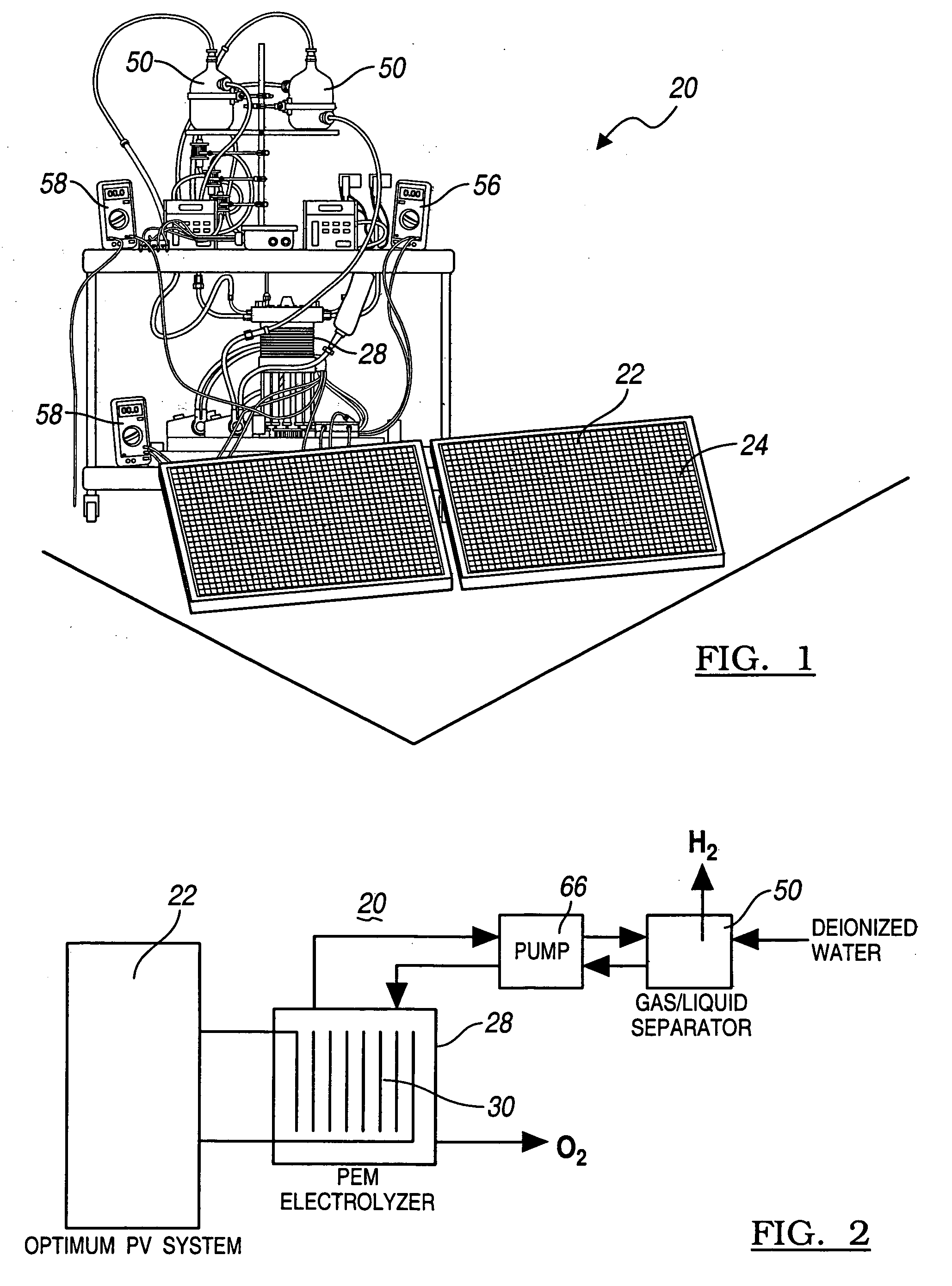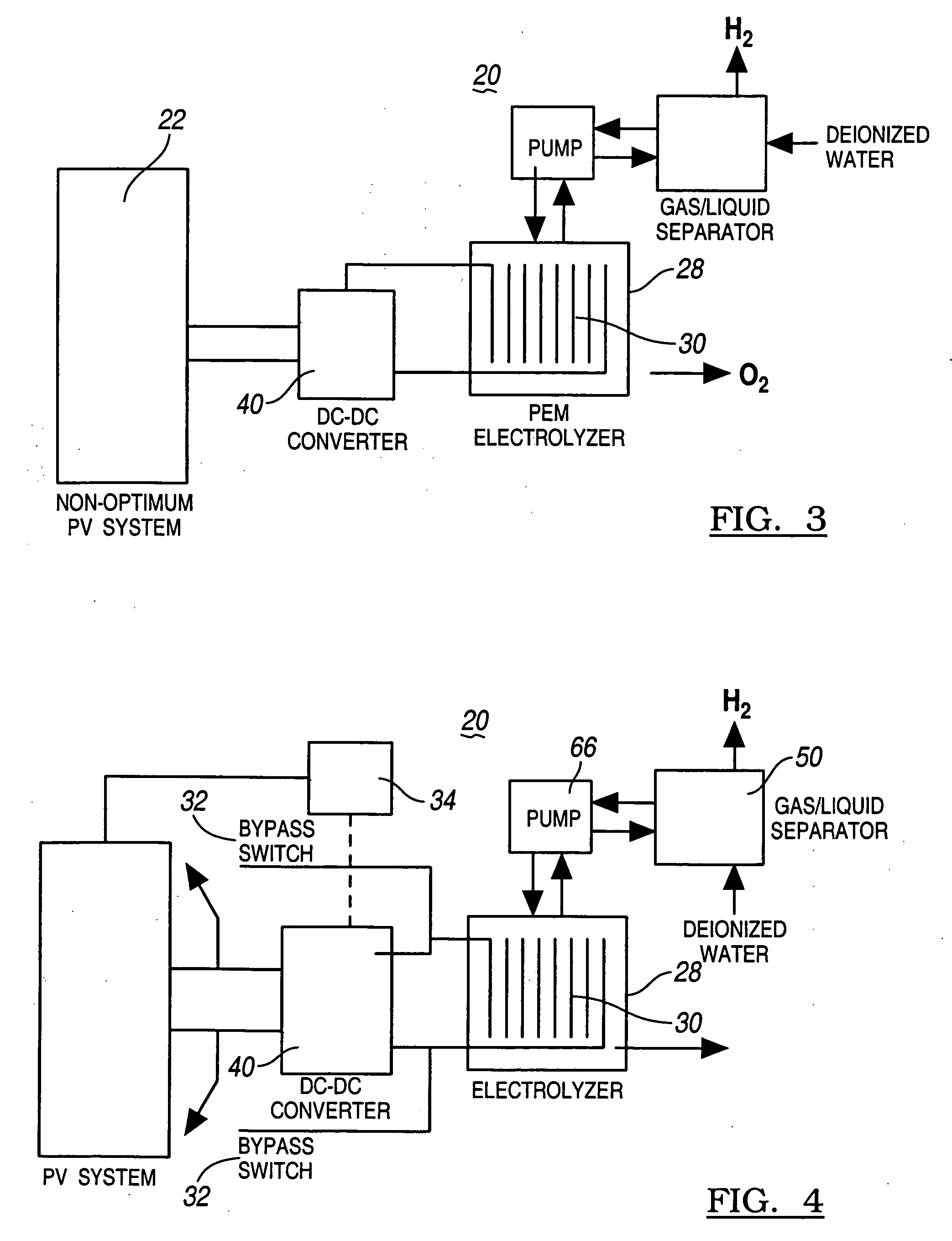System and sub-systems for production and use of hydrogen
a technology of hydrogen fuel and system, applied in the field of hydrogen production, can solve the problems of increasing capital costs, hydrogen fuel cost (at least $15 per kilogram of hydrogen), and the inability to produce hydrogen as cheaply as the steam reforming of methane, and achieve the effect of maximising the stack efficiency
- Summary
- Abstract
- Description
- Claims
- Application Information
AI Technical Summary
Benefits of technology
Problems solved by technology
Method used
Image
Examples
Embodiment Construction
[0027] Operation of the PV-electrolyzer system is explained with general reference to FIGS. 1 and 2, which represent a diagram and schematic of the system according to the teachings of the present invention. The PV-electrolyzer system 20 has a photovoltaic (PV) subsystem 22 having at least one solar or PV cell 24 or PV subsystem 22 and an electrolyzer subsystem 28 having at least one electrolysis cell or membrane electrode assembly (MEA) 30 for electrolyzing water to generate hydrogen. The electrolysis cell 30 is preferably a high efficiency Proton Exchange Membrane (PEM) sandwiched between two catalyzed electrodes to form a membrane electrode assembly (MEA). The voltage and current requirements of the electrolyzer subsystem 28 are matched with the voltage of the electricity produced by the solar powered photovoltaic (“PV”) subsystem 22 to significantly increase the operating efficiency of the overall system 20. As described below in detail, the system 20 optionally utilizes a high ...
PUM
| Property | Measurement | Unit |
|---|---|---|
| Pressure | aaaaa | aaaaa |
| Pressure | aaaaa | aaaaa |
| Electric potential / voltage | aaaaa | aaaaa |
Abstract
Description
Claims
Application Information
 Login to View More
Login to View More - R&D
- Intellectual Property
- Life Sciences
- Materials
- Tech Scout
- Unparalleled Data Quality
- Higher Quality Content
- 60% Fewer Hallucinations
Browse by: Latest US Patents, China's latest patents, Technical Efficacy Thesaurus, Application Domain, Technology Topic, Popular Technical Reports.
© 2025 PatSnap. All rights reserved.Legal|Privacy policy|Modern Slavery Act Transparency Statement|Sitemap|About US| Contact US: help@patsnap.com



